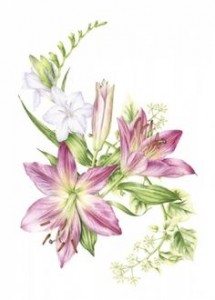Art and Driftwood
What is essential to all art? In looking in the dictionary, “plan” or “management” came up in each definition. Creativity worked within a plan. Also performing expertly that which is planned and sticking with the plan. Just as important as in dressing or planting a garden, your product is the skill of applying the principles of art. So use interesting wood, then how you clean finish and present your product will also apply to the orderliness of art.
Look for an interesting form defined by line, texture, shape and color. Since not all found wood reveals these basic principles immediately, you must develop the “Seeing Eye” that perceives these features within the raw wood. Always judge by weight as more solid wood will be heavier.
How to bring order? What is its shape? Mother Nature gives us much too much most of the time. Some really beautiful pieces just have too much going on. Use chalk to mark the general flow. Drape some of the sculpture with a black cloth to visually remove those parts you feel may be too much for your piece. Look for that S shaped Hogarth curve. Many pieces have parts of circles. Keep enough of the opposing material to make it interesting. Keep tension in the piece. Pick and choose. Develop that artistic eye we all possess. Discuss your piece and what you see in it with others, and see what they see or suggest. But always remember that you are the artist and your choice is the most important.
Sometimes it will take some time to find what needs to be removed and what should be saved. The LuRon method says that the artist’s function is to bring order to that piece. Determine the soundness of the piece. Remember, space is an element of any art. Voids add to the artistry of sculpture. Our job is to reveal and define a beauty that is already present within the wood.
One can take a picture of the wood and put it on the computer, then work at eliminating extraneous parts. Be sure to always take a look at the piece from all sides, as that is how it will be viewed. On edges, remember that uneven numbers are the best 1,3,5 etc. Look for the possible openings! Space is wonderful.
A bit about basing. Sometimes it is a good idea to hang large pieces to see how they look. Basing should be thought of from the beginning. If large pieces are ever cut off, save those for future bases. Basing materials, while varied, have just one function: each base chosen should feature, not detract, from your sculpture.
This brings us to the “power of three.” Three points give us a more stable base. Three points of the sculpture give more grace and flow than any even number. A triangle is the basic form of most art as it presents a firm base and a flow towards the top to give us balance and lift. A triangle provides a pleasing composition. Also a base with three angles will feature our sculpture best. There is our most important basing concept. No base should be higher than one third of the overall piece.
Working our pieces within these guidelines we are creating “art” and not just craft. Many people have said to me that our achievements are so much work, but I always assure them that we love what we are doing so that it can never be called work. Welcome to all of you to this wonderful new art form.

